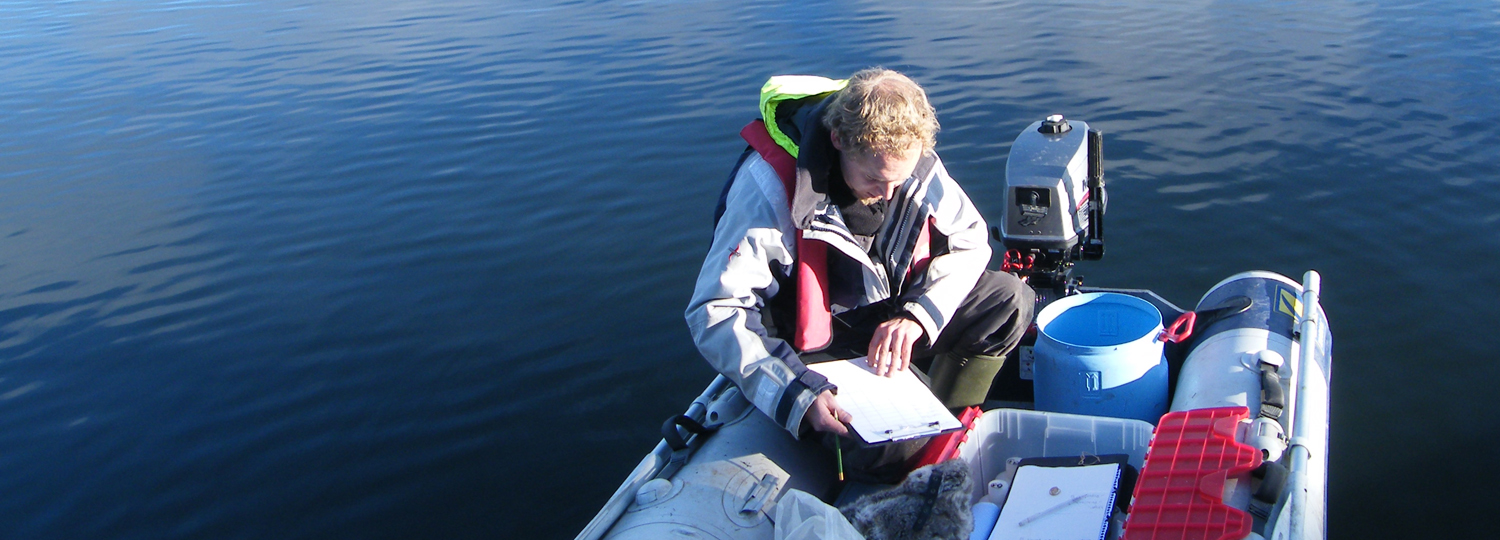- Overview
- Pressures
- Management responses
- Monitoring the environment
- Environmental responses
- Return to UK Lake Restoration project home
Overview
Clatto Reservoir is a shallow reservoir (surface area 9ha, mean depth c. 2.7m, maximum depth 7m) in Camperdown Country Park, Dundee, Scotland. Although the site was previously used as a drinking water reservoir, this ceased in 1972. Now, it is used solely for recreational activity such as boating and fishing. In recent years, the reservoir has suffered from persistent cyanobacterial blooms that have restricted its amenity venue.
Pressures
Inputs of water and nutrients from groundwater and agricultural sources are likely to be negligible at this site because the majority of the surrounding land is lower than the sill of the reservoir and mainly comprises residential developments or maintained parkland. Historically, it is likely that the main phosphorus (P) inputs to the reservoir have been from water entering via an engineered piping system that connected it to a series of upstream reservoirs, and from the resident bird population.
Management responses
In an effort to control cyanobacterial blooms, Dundee City Council trialled treatment with barley straw in 2007 and 2008. Flushing with water from an upstream reservoir was also tested in 2008. Neither of these treatments delivered the required improvement in water quality. In 2008, Clatto reservoir was isolated from all upstream reservoirs and is now believed to be re-charged by rainwater only. Shortly afterwards, all other management practices were suspended and an application of lanthanum-bentonite clay (Phoslock®) to the loch in spring 2009 was trialled to control internal P loading and meet water quality targets of 35µg l-1 total P and 20,000 cells ml-1 cyanobacteria. The latter is a WHO guideline that equates to a level of risk defined as "relatively low probability of adverse health effects".
Monitoring the environment
CEH investigated the ecological effects of the management practices and conducted a comprehensive one-year monitoring programme of the water and sediment chemistry at the reservoir between 2009 and 2010, ie after the Phoslock® application. Monthly data for cyanobacterial abundance were provided by the Scottish Environment Protection Agency during the summer months between 2007 and 2011.
Environmental responses
Clatto Reservoir was frequently closed during the summer months of 2007 and 2008 due to cyanobacterial blooms exceeding water quality targets. This suggested that the application of barley straw and the trialled change in flushing regime had not reduced the abundance of cyanobacterial sufficiently. However, after the Phoslock® application in 2009, water clarity and macrophyte colonisation depth increased rapidly, and cyanobacterial abundance decreased significantly in comparison with 2007-2008. In 2010 and 20011, cyanobacterial abundances failed to meet water quality targets again. Laboratory controlled sediment assays indicated that the original dose of Phoslock® applied to the reservoir was only sufficient to bind 42% of release-sensitive sediment P in the top 4cm of the bed sediments (Meis et al, 2012). It was concluded that "top up" applications may be necessary to achieve sustained water quality improvements. Cyanobacterial abundance at the site continues to be monitored by SEPA.
